Limelight
In a universe of more than 1200 collaborators, there are many months when there is more than one collaborator with a performance suitable for “Limelight”. An example of this is the fact that for several months we receive more than one nominee. This led to a change in the publication policy: BIP has started to highlight all nominees, without considering the merit (because all nominees have much merit!). Additionally, considering the criteria for news opportunity, an interview with one of the nominees is developed.
THIS MONTH WE SPOKE WITH Nuno Cruz (CRas)
1. How is this team composed and how did it end up together?
PISCES team is composed of 16 researchers from INESC TEC and 8 from CINTAL (from the University of Algarve) assembled through the necessary skills to address the many challenges introduced by the Shell Ocean Discovery XPRIZE competition. By the end of 2015, when the competition started, we confirmed that it was completely in line with our strategy for the development of deep sea exploration technologies. Since we've been working on that strategy in several R&D projects in the robotics field, it was fairly easy to group the many isolated developments into one big common goal. In this project, the mapping requirements couldn't be fulfilled by commercially available sensors. So, and having been working together for many years now, we reached our partners at CINTAL who are specialists in underwater sonars and that want to develop an innovative solution for deep sea mapping.
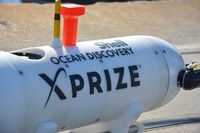
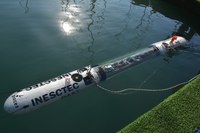
2. What are the role of INESC TEC/CRAS in this group?
Both INESC TEC and CRAS are responsible for the robotic activities and for the general coordination of the team since the major challenges are clearly present in the marine robotics area. Fortunately, we are involved in many national and international projects but at the same time, it restrains the human resources and the equipment availability. Therefore, ensuring that the activities of this project have a minimal impact on other projects is an important role of CRAS.
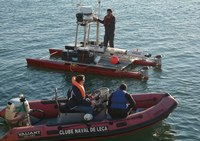
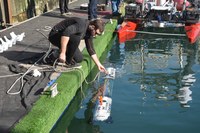
3. What kind of work do you develop?
PISCES is the name of a constellation and was chosen not only for its connection to the sea but also because it represents the use of cooperative robotics to solve complex problems. In reality, we want our robots (boats and submarines) to follow our example and to take advantage of their complementarity to reach ambitious goals. In order to do that, it is necessary to move in different directions: improve the toughness of each system, improve their energy efficiency, refine the ability to understand the environment and to improve the performance of navigation and monitoring. These singular improvements then have to be properly enhanced by joint usage.
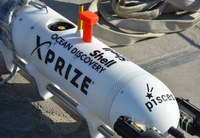
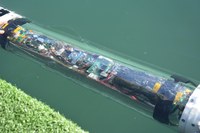
4. The nomination highlights an excellent result you obtained. What is this result?
The excellent result obtained was without a doubt the progression to the final round of such a demanding competition like this one in which we see the participation of some of the top robotics institutions. Up until then, we had already gone through two qualification rounds where we had to show that we had viable technical solutions for precise deepwater mapping. Many of those solutions were innovative and therefore had a high risk of implementation. For that reason, in this last round where we had to demonstrate the systems in operation we faced an enormous challenge. Fortunately, we were able to successfully meet the eleven requirements established by the organization and we went through to the final round, entering a restrict group of nine winning teams: four European, four North American and one Japanese. This alone had great spotlight in the robotics community, demonstrating the growing role of INESC TEC in robotics at an international level. It should be noted that some of the competitions organized by XPRIZE are so demanding that they end up without a winner which shows the importance of reaching this final round.
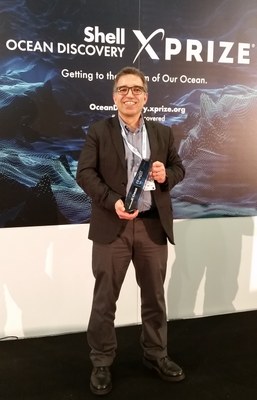
5. What are the goals for the future of this team?
Until the end of the competition, which should last until the last quarter of 2018, the team is focused on overcoming the technical difficulties, improving the performance of the many sub-systems as much as possible and demonstrating on the field the capabilities of the integrated system. Right now, we were already able to develop and demonstrate many new capabilities but unfortunately, due to the tight deadlines associated to the competition we haven't been able to proceed with the natural development cycle, which includes extensive testing, using feedback and the publication of R&D results. This will clearly be a midterm priority as well as the development and testing of new ideas that have been naturally occurring.
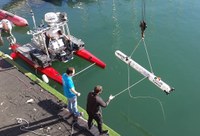
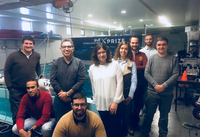
As an integrated solution, the PISCES concept will be extremely valuable in detailed mapping and exploration of the Portuguese seabed, especially associated to the extent of the continental shelf. Simultaneously, we are keeping tracks on the international effort for the complete seabed mapping as part of the initiative GEBCO Seabed 2030 to which we all want to be able to contribute to. These activities will be supported by the TEC4SEA infrastructure which is in its implementation phase and will have in PISCES an important banner due to its innovative character.
6. We will end this interview by asking you to comment on your nomination by the CRAS Coordination:
“The CRAS Coordination nominates the XPrize team for Limelight for their excellent result, made possible due to their great commitment and teamwork. Therefore, the 16 collaborators from CRAS distinguished are: Alexandra Nunes, Alfredo Martins, Ana Rita Gaspar, Andry Pinto, Aníbal Matos, Bruno Ferreira, Carlos Gonçalves, Eduardo Silva, Guilherme Amaral, Hugo Ferreira, Jorge Barbosa, José Almeida, José Alves, Nuno Abreu, Nuno Cruz and Vítor Pinto.”
Even though the project is not over yet, being able to reach the final round was an achievement that made the team very proud. For that, it was necessary to pass eleven qualifying tests that evaluated the performance of our solution under various terms, from the toughness to the ability to understand the environment. These tests took place on the CRAS’ labs and in Port of Leixões, still during the winter. It was a stressful week since it involved many equipment and new methods and any flaw could lead to us being eliminated from the competition.
We have been fortunate to meet all of the requirements, which was only possible due to the effort of everyone involved around a common goal. In fact, this competition mobilized practically every asset available on CRAS and included researchers that work on different labs (in FEUP and in ISEP) and as such it strengthened the cohesion between the elements of the centre.


